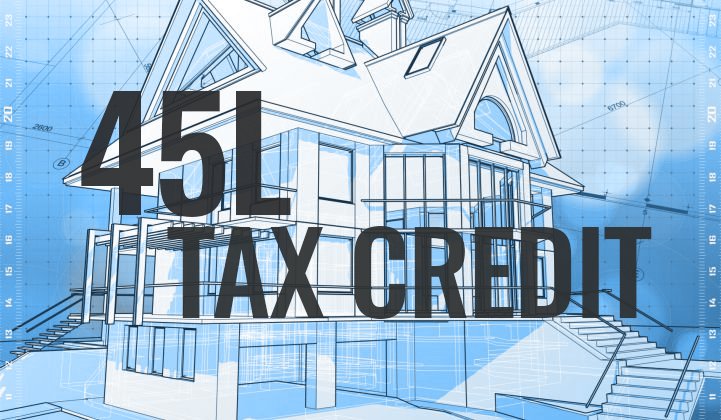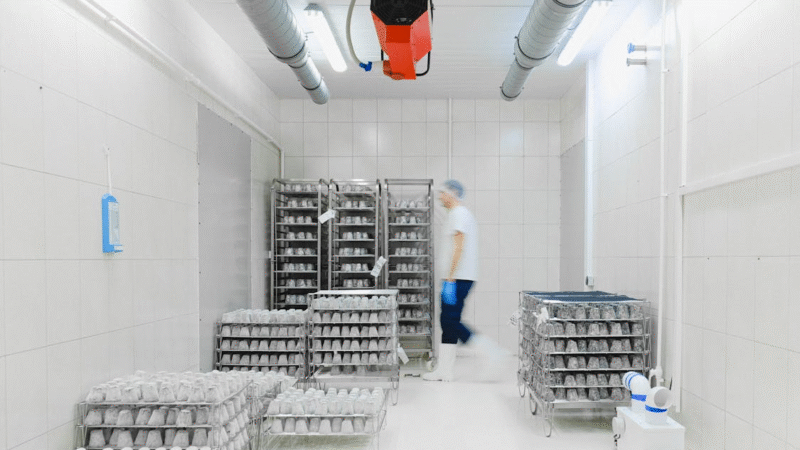45L Tax Credit: How Does it Work?


It may cost more to build energy-efficient homes upfront, but it provides environmentally friendly and energy-sufficient housing to pay future dividends. Contractors are also offered a $2000 tax credit for every qualified unit. The energy-efficient home credit, otherwise known as the 45L Tax Credit, offers incentives to single-family and multi-family home builders. It can also be applied for home upgrades and renovation projects
What Does the 45L Tax Incentive Cover?
The 45L tax credit offers contractors a $2000 tax credit for every housing unit remodeled or built in accordance to specific energy-saving requirements. It can be offered retroactively to 2018-2020 and is legally acceptable for residential units renovated or built, sold or leased, by December 31, 2021.
Projects are required to be three stories above ground or less, sans the underground parking. They also must utilize at least 50% less energy for heating and cooling unlike non-energy-efficient housing units. The non-energy-efficient units used for comparison should also be constructed in compliance with the standards in chapter 4 of the 2006 International Conservation Code. This code provides heating and cooling efficiency minimums permitted by the Department of Energy under the National Appliance Energy Conservation Act of 1987 for new construction.
The building envelope must be one-fifth of the energy efficiency improvement and be 10% more efficient compared to a similar non-efficient housing unit. The building envelope is made up of walls, windows, foundation, and roof, which make up a thermal barrier between the inner and outer environment.
Newly constructed units must have energy-efficient features, such as:
- Double or triple-pane windows
- Reflective roofing that help reduce heat loss
- Radiant floor hydronic heating panels or radiator systems that use steam or hot water
- Insulated exterior doors
- Insulated foundations or slabs
- HVAC systems with SEER of 13 or higher for air conditioning
- Roof insulation with 38 or higher R-Value, or R-13 to R-19 rated wall insulation.
- Low-E rated Vinyl windows, which reflect heat
- Gas furnaces with an efficiency rating of 80% or higher.
Newly constructed single-family homes can qualify for a 45L tax credit if the unit is sold or rented out soon after it is built. The 45L tax incentive provides the most impact for multi-family housing projects such as townhomes, apartments, condominiums, assisted living facilities, and student housing because it’s provided for each housing unit. Housing units must have at least one or more rooms, including a living room, sleeping area, and kitchen.
Who Gains from the 45L Tax Credit?
The individuals that benefit from the 45L tax incentive are the qualified builders/developers and future owners and occupants of the housing thanks to lower energy bills The property must be sold, leased, or rented out in order to qualify for the 45L tax incentive.
The 45L tax incentive encourage builders to make use of construction materials that are energy efficient. Although some energy-efficient materials can be expensive, the tax credit together with increased equity in the construction project and lower energy bills will provide long-term benefits to occupants. Certified housing units can be marketed or advertised as “green living” and attract individuals and/or families seeking housing that’s not only environmentally friendly but also well within their budget. Unit buyers will also witness an increased equity including environmental and budgetary benefits.
Builders and/or developers can carry forward unused 45L tax credits for up to 20 years.
How Does the 45L Tax Incentive Work?
The contractor must first be certified by an independent and accredited certifier. The certifier, on the other hand, must also be certified by a rating network and use an IRS-approved software. One example of a rating network is the Residential Energy Services Network (RESNET). The certification package comes with an on-site testing and computer modeling from the certifier. This packaged is authenticated by the certifier and includes all necessary information on the 45L tax incentive. Fees are normally evaluated on a per-unit bases.
There is no minimum or maximum number of housing units that a project can certify. This credit is also retroactively applicable to projects from 2018 to 2020 and until the end of 2021.
The credit is applied and claimed on the tax return for the year the housing units are sold or leased. This works best in a 9% Low Income Tax Credit (LIHTC) deals for new construction or rehabilitation. The 9% figure represents tax credits for around 9% of the project’s construction expenses for projects sans federal subsidies.
Developers and contractors that want to pursue the 45L tax incentive should work towards obtaining assessments and pre-qualifications for the property. They should also cooperate with their tax preparer so they can claim the credit. The process of certification involves reviewing construction documents, consultations with project managers, building designers, and staff, in-person site visits, and more. It’s important to prepare ahead of this process since it can involve coordinating with multiple people and pieces of a housing project.
The 45L tax incentive gives developers and contractors the opportunity to build energy-efficient homes that’s a lot more marketable, has more value, and protects future residents from the growing energy prices. They will be able to assist you and provide you with a step-by-step guide on how to claim your tax credit.
What Types of Property Qualify for a 45L Tax Incentive?
The following types of properties qualify for the 45L tax incentive:
- Single family homes
- LIHTC or affordable housing
- Apartment buildings
- Residential condominiums
- Student housing
- Assisted living housing
- Production home developments and
- Substantial reconstruction or rehabilitation
What Process is Involved to Claim the Tax Credit?
Each property or housing unit must obtain an energy use analysis to confirm whether or not it meets the efficiency requirements. Certified RESNET raters will come up with an Energy Model an HERS rating for your property. Finally, Your project will be certified, and you will qualify for the $2,000 available tax credit.






